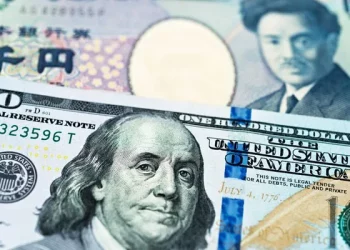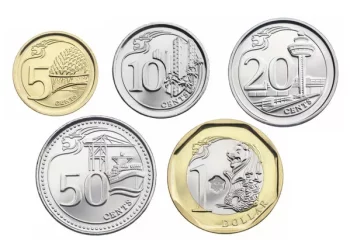Foreign exchange (Forex) trading plays a critical role in the global economy, facilitating international trade, investments, and financial transactions across borders. A common question that arises in this arena is: How much is 300 US dollars in rupees? To answer this, we must understand the mechanics of currency exchange rates, the impact of market fluctuations, and the factors that influence these conversions.
The value of the US dollar (USD) relative to the Indian rupee (INR) fluctuates daily due to a wide range of economic, political, and market forces. In this article, we will explore the key aspects that affect the conversion rate between USD and INR, how to determine the current value, and the factors you should consider when converting currency in the foreign exchange market.
1. Understanding Currency Exchange Rates
At the heart of currency conversion lies the concept of an exchange rate, which is the price of one currency relative to another. In the case of USD to INR, the exchange rate determines how many Indian rupees (INR) one can get for each US dollar (USD). Exchange rates can be categorized into two types: fixed and floating.
Fixed Exchange Rate: In a fixed exchange rate system, a country’s currency value is pegged to another currency, usually the US dollar or a basket of currencies. For example, if the Indian government decided to peg the Indian rupee to the US dollar at a fixed rate, the value of the rupee would not fluctuate.
Floating Exchange Rate: Most countries, including India, follow a floating exchange rate system. This means the value of the Indian rupee against the US dollar fluctuates based on supply and demand dynamics in the foreign exchange market. A country’s central bank may intervene occasionally to stabilize or guide its currency, but overall, its value is determined by the global market.
As of today, the INR/USD exchange rate is constantly shifting based on a variety of macroeconomic factors. To get the most accurate answer to how much 300 US dollars is in rupees, you will need to check the real-time exchange rate from a reliable source like a bank, a Forex broker, or a currency converter tool online.
2. Current Exchange Rates: Understanding the Context
To convert 300 USD to INR, we first need to determine the current exchange rate. Exchange rates can change multiple times a day depending on market conditions, so the value of 300 US dollars in rupees will vary based on the time of the transaction. As an example, let’s assume the current exchange rate is 1 USD = 83.50 INR.
In this case, to convert 300 US dollars into rupees, the equation would be:
300 USD×83.50 INR=25,050 INR
So, 300 US dollars would be equivalent to 25,050 Indian rupees at an exchange rate of 1 USD = 83.50 INR. However, this is just an example, and the real-time rate will vary based on various factors, including geopolitical events, interest rates, inflation, and market speculation.
3. Factors Affecting the USD/INR Exchange Rate
The value of the Indian rupee against the US dollar is influenced by a complex set of factors. Understanding these factors can provide valuable insights into currency exchange trends and help you anticipate fluctuations in the exchange rate.
Interest Rates and Inflation
One of the most important determinants of currency value is the relative interest rates between countries. When the US Federal Reserve increases interest rates, it often strengthens the US dollar because higher interest rates attract capital inflows into the US financial markets. On the other hand, if the Reserve Bank of India (RBI) raises interest rates, it can boost the value of the Indian rupee by attracting foreign investment into Indian assets.
Inflation rates are another critical factor. Countries with lower inflation rates typically see their currency appreciate over time because lower inflation preserves the purchasing power of the currency. If India experiences higher inflation than the US, the value of the Indian rupee may depreciate relative to the US dollar.
Economic Growth and Performance
Economic performance plays a crucial role in determining the strength of a currency. If the US economy is growing faster than India’s, the US dollar may appreciate against the Indian rupee due to increased demand for US goods, services, and investments. Conversely, if India’s economic performance outpaces that of the US, the rupee may strengthen.
Investors closely monitor GDP growth, unemployment rates, and trade balances to gauge the economic health of a country. A country that consistently shows strong economic performance is likely to have a stable or appreciating currency.
Geopolitical Events and Political Stability
Geopolitical events, such as elections, trade wars, and military conflicts, can cause significant fluctuations in exchange rates. Political stability tends to favor the domestic currency, while periods of uncertainty or instability can drive capital outflows, causing a depreciation of the local currency.
For example, if there are concerns about political instability in India, foreign investors may choose to move their capital to the US or other stable economies, which could lead to a depreciation of the Indian rupee relative to the US dollar.
Supply and Demand in the Forex Market
The supply and demand for a currency in the foreign exchange market also play a significant role in determining its exchange rate. The Forex market operates 24 hours a day and is influenced by global market participants, including central banks, financial institutions, hedge funds, multinational corporations, and individual traders.
If there is a high demand for US dollars due to increased trade or investment, the value of the US dollar will rise relative to other currencies, including the Indian rupee. Conversely, if demand for the US dollar weakens, the rupee may appreciate against the dollar.
4. Methods to Convert US Dollars to Indian Rupees
There are several methods available for converting US dollars into Indian rupees, and each comes with its advantages and disadvantages. Below, we explore the most common ways of performing the conversion.
Currency Exchange at Banks and Forex Dealers
The most traditional method of converting US dollars to rupees is by visiting a bank or a licensed foreign exchange dealer. Banks typically offer competitive exchange rates, but the rates may be slightly lower than the market rate due to transaction fees and commissions. You may also need to provide identification and complete paperwork, depending on the amount you wish to exchange.
Online Currency Converters
Online currency converters are a quick and convenient way to check the current exchange rate and calculate the conversion between USD and INR. Websites such as XE, OANDA, and Google provide real-time exchange rates and allow users to input a specific amount of USD to see the equivalent in INR. Keep in mind that these online rates are often slightly different from the rates provided by banks or Forex dealers, as they do not account for any transaction fees or service charges.
Foreign Exchange ATMs and International Debit/Credit Cards
If you need to convert US dollars to rupees while traveling or making online purchases, you can use foreign exchange ATMs or international debit/credit cards. These cards typically offer competitive exchange rates, but they may charge foreign transaction fees or ATM withdrawal fees. It is important to check the fees associated with your card before using it abroad to avoid unexpected costs.
Currency Exchange Apps
Many mobile apps provide real-time exchange rate information and allow users to convert currencies on the go. Popular apps like Revolut, Wise (formerly TransferWise), and PayPal provide options for currency conversion, along with lower fees compared to traditional banks. These apps are especially useful for frequent travelers and traders who need to make fast currency exchanges.
5. The Impact of Exchange Rate Fluctuations
Fluctuations in the exchange rate can have significant impacts on individuals, businesses, and investors involved in cross-border transactions. A stronger US dollar (relative to the Indian rupee) benefits US consumers traveling to India, as their dollars will buy more goods and services in India. Conversely, if the dollar weakens, it becomes more expensive for US tourists to visit India.
For Indian businesses that rely on importing goods from the US, a weaker rupee makes imports more expensive. On the other hand, a stronger rupee benefits Indian exporters, as their goods become more affordable for foreign buyers.
Investors who are involved in currency trading (Forex) also need to stay informed about exchange rate movements to make profitable trades. Forex traders use various tools and strategies, such as technical analysis, fundamental analysis, and sentiment analysis, to predict future price movements and capitalize on exchange rate fluctuations.
Conclusion
In conclusion, the value of 300 US dollars in rupees depends on the current exchange rate between the US dollar (USD) and the Indian rupee (INR), which is constantly fluctuating based on various economic, political, and market factors. While we used an example of 1 USD = 83.50 INR to illustrate the conversion, the real-time rate can vary, so it is essential to check reliable sources for accurate and up-to-date information.
Understanding the factors that influence exchange rates, such as interest rates, inflation, geopolitical events, and market demand, can help individuals and businesses make informed decisions when converting currencies. Additionally, choosing the right method for currency conversion—whether through a bank, an online converter, or a Forex broker—can help you get the best exchange rate and minimize costs.
Whether you are a traveler, investor, or business owner dealing with cross-border transactions, staying informed about exchange rates and market trends is crucial to maximizing the value of your money in the global marketplace.
Related Topics:



























